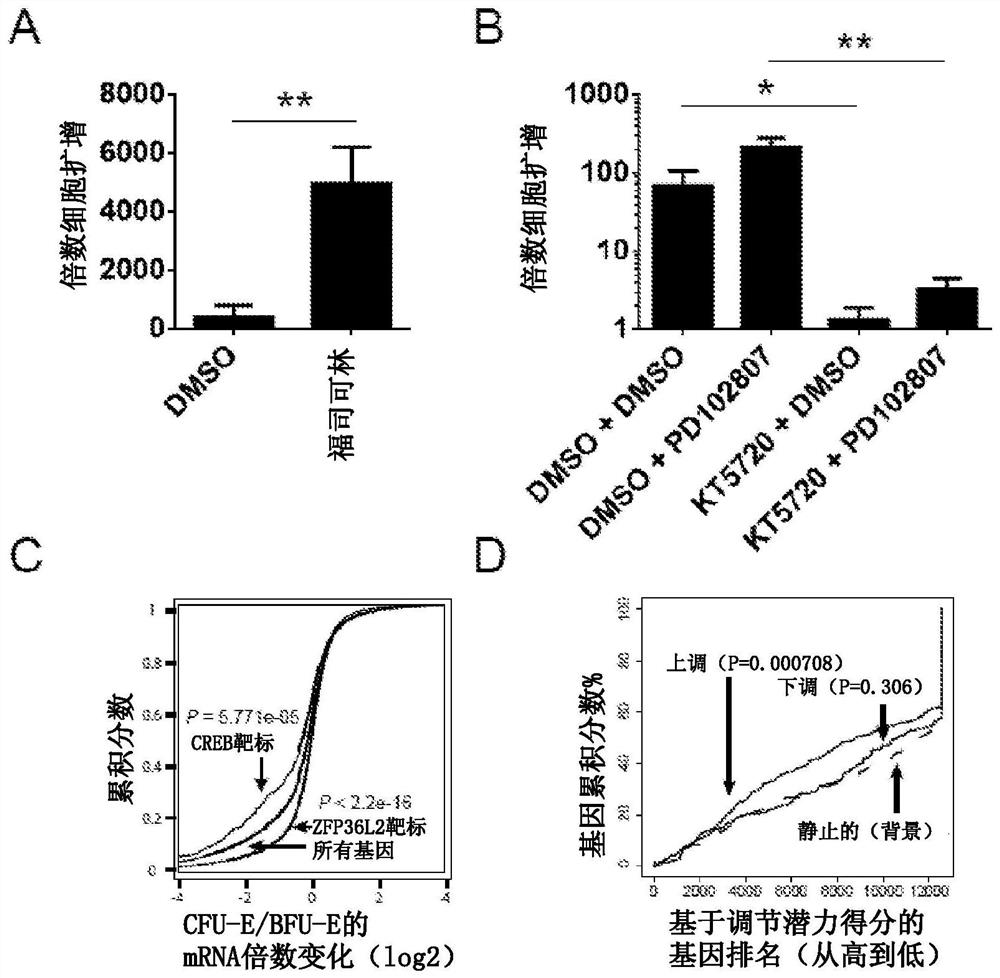Muscarinic acetylcholine receptor subtype 4 antagonists in the treatment of anemia
An ethyl, solvate technology in the field of muscarinic acetylcholine receptor subtype 4 antagonists for the treatment of anemia
- Summary
- Abstract
- Description
- Claims
- Application Information
AI Technical Summary
Problems solved by technology
Method used
Image
Examples
Embodiment 1
[0140] This example describes the effect of the muscarinic acetylcholine receptor CHRM4 pathway on the self-renewal of BFU-E and the effect of the small molecule muscarinic acetylcholine receptor inhibitor paraxetonium bromide on anemia in a mouse model. experiment of.
[0141] result
[0142]To identify G protein-coupled receptors ("GPCRs") that regulate BFU-E self-renewal, genome-wide gene expression profiles were analyzed, focusing on GPCRs that are abundantly expressed in BFU-E. To further narrow down the candidate list to the GPCRs most likely to be functionally important in the regulation of BFU-E self-renewal versus differentiation, the inventors took advantage of the fact that differentiation and self-renewal are two opposites with potentially contrasting gene expression profiles. The concept of cell fate.
[0143] Among the 358 druggable GPCRs examined, 3 GPCRs including P2ry2, Gpr124 and Calcrl were found to be downregulated during BFU-E differentiation and upregul...
Embodiment -2
[0176] This example describes experiments performed to investigate whether other small molecule M4 antagonists, such as PCS1055 and PD102807, promote BFU-E self-renewal and correct anemia in vivo.
[0177] result
[0178] Figure 4A shows the chemical structure of PD102807. PD102807 was found to increase the expansion of BFU-E cells in cell culture (Fig. 4B). In addition, PD102807 was also found to increase the levels of HCT and RBC when administered to mice (PD102807 was given intravenously or orally) (see Figures 4C and 4D, respectively). Figure 4E shows that at 1 × 10 -9 M, 1×10 -8 M, 1×10 -7 M, 1×10 -6 M and 1×10 -5 Results of testing PD102807 at M concentrations.
[0179] Materials and methods
[0180] Mouse BFU-E Culture System
[0181] BFU-E was isolated from mouse embryonic day 14.5 fetal liver using fluorescence-activated cell sorting (FACS). BFU-E in StemSpan SFEM II containing rmSCF (100ng / ml), EPO (2U / ml), rmIGF-1 (40ng / ml), dexamethasone (1nM) and DMSO, P...
PUM
 Login to View More
Login to View More Abstract
Description
Claims
Application Information
 Login to View More
Login to View More - R&D
- Intellectual Property
- Life Sciences
- Materials
- Tech Scout
- Unparalleled Data Quality
- Higher Quality Content
- 60% Fewer Hallucinations
Browse by: Latest US Patents, China's latest patents, Technical Efficacy Thesaurus, Application Domain, Technology Topic, Popular Technical Reports.
© 2025 PatSnap. All rights reserved.Legal|Privacy policy|Modern Slavery Act Transparency Statement|Sitemap|About US| Contact US: help@patsnap.com



